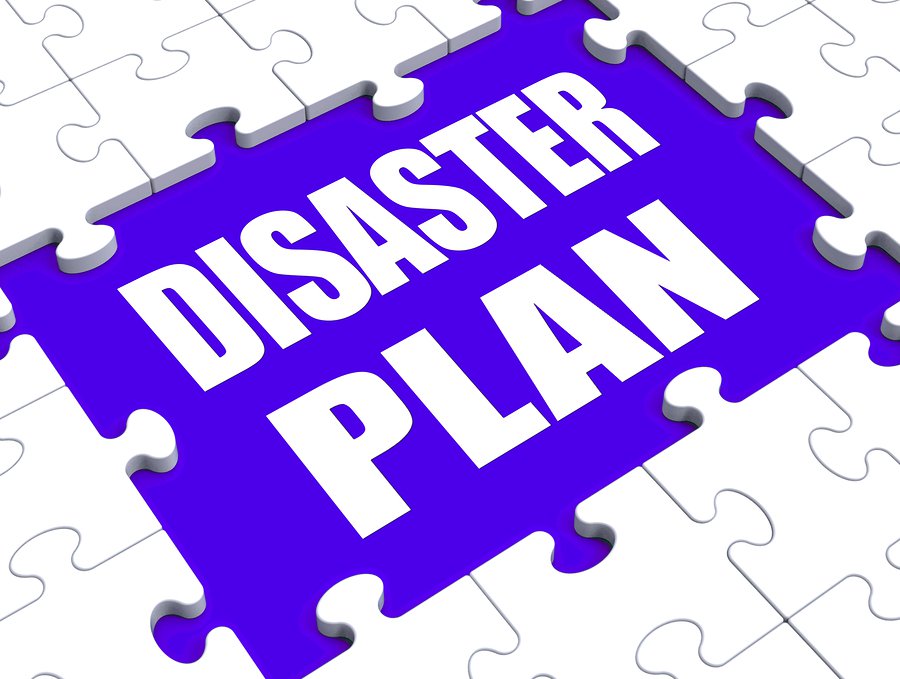 Disaster Recovery Plans (DRP) and Business Continuity Plans (BCP) are important for organizations to have in place, but for some businesses, they are a requirement. Healthcare, Financial Industries (such as banks and credit unions), and Legal Practices are just a few examples where there are requirements, even laws, mandating that these are in place and tested regularly. Today we look at the two and uncover what they entail (borrowed in part from Disasterrecovery.org, an independent organization that provides guidance and information on Disaster Recovery and business continuity planning):
Disaster Recovery Plans (DRP) and Business Continuity Plans (BCP) are important for organizations to have in place, but for some businesses, they are a requirement. Healthcare, Financial Industries (such as banks and credit unions), and Legal Practices are just a few examples where there are requirements, even laws, mandating that these are in place and tested regularly. Today we look at the two and uncover what they entail (borrowed in part from Disasterrecovery.org, an independent organization that provides guidance and information on Disaster Recovery and business continuity planning):
Business Continuity Planning
Business Continuity Planning is the way an organization can prepare for and aid in disaster recovery. It is an arrangement agreed upon in advance by management and key personnel of the steps that will be taken to help the organization recover should any type of disaster occur. These programs prepare for multiple problems. Detailed plans are created that clearly outline the actions that an organization or particular members of an organization will take to help recover/restore any of its critical operations that may have been either completely or partially interrupted during or after (occurring within a specified period of time) a disaster or other extended disruption in accessibility to operational functions. In order to be fully effective at disaster recovery, these plans are recommended to be regularly practiced as well as outlined.
In layman’s terms, a Business Continuity Plan or BCP is how an organization guards against future disasters that could endanger its long-term health or the accomplishment of its primary mission. BCPs take into account disasters that can occur on multiple geographic levels-local, regional, and national-disasters like fires, earthquakes, or pandemic illness. BCPs should be live and evolving strategies that are adjusted for any potential disasters that would require recovery; it should include everything from technological viruses to terrorist attacks. The ultimate goal is to help expedite the recovery of an organization’s critical functions and manpower following these types of disasters. This sort of advanced planning can help an organization minimize the amount of loss and downtime it will sustain while simultaneously creating its best and fastest chance to recover after a disaster.
Disaster Recovery Plans
Disaster Recovery (DR) is the process an organization uses to recover access to their software, data, and/or hardware that are needed to resume the performance of normal, critical business functions after the event of either a natural disaster or a disaster caused by humans. While Disaster Recovery plans, or DRPs, often focus on bridging the gap where data, software, or hardware have been damaged or lost, one cannot forget the vital element of manpower that composes much of any organization. A building fire might predominantly affect vital data storage; whereas an epidemic illness is more likely to have an affect on staffing. Both types of disaster need to be considered when creating a DR Plan. Thus, organizations should include in their DRPs contingencies for how they will cope with the sudden and/or unexpected loss of key personnel as well as how to recover their data.
Disaster Recovery Plans are generally part of a larger, more extensive practice known as Business Continuity Planning. DR plans should be well practiced so that the key players are familiar with the specific actions they will need to take should a disaster occur. DR plans must also be adaptable and routinely updated, e.g. if new people, a new branch office, or new hardware or software are added to an organization they should promptly be incorporated into the organization’s disaster recovery plan. Companies must consider all these facets of their organization as well as update and practice their plan if they want to maximize their recovery after a disaster.
Great Lakes Disaster Recovery
With our Data Protection services, your data is there when you need it. We have multiple options for Data Backup and Recovery services. In fact we can ensure that if you have a failure you are not down for more than 30 minutes.
Data grows over time and so should your backup strategies. We give you speed, convenience, and reliability with our automated backup system, which reduces Recovery Time Objectives (RTOs) and Recovery Point Objectives (RPOs).
We are a proud authorized partner for both Dell AppAssure and Asigra Agentless Backup services.




